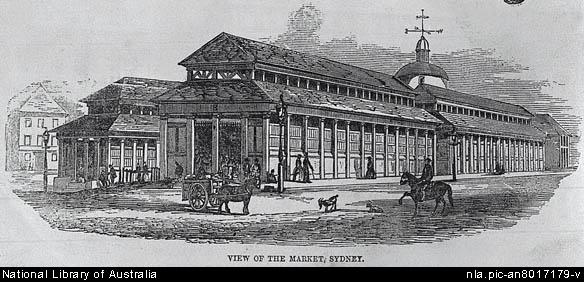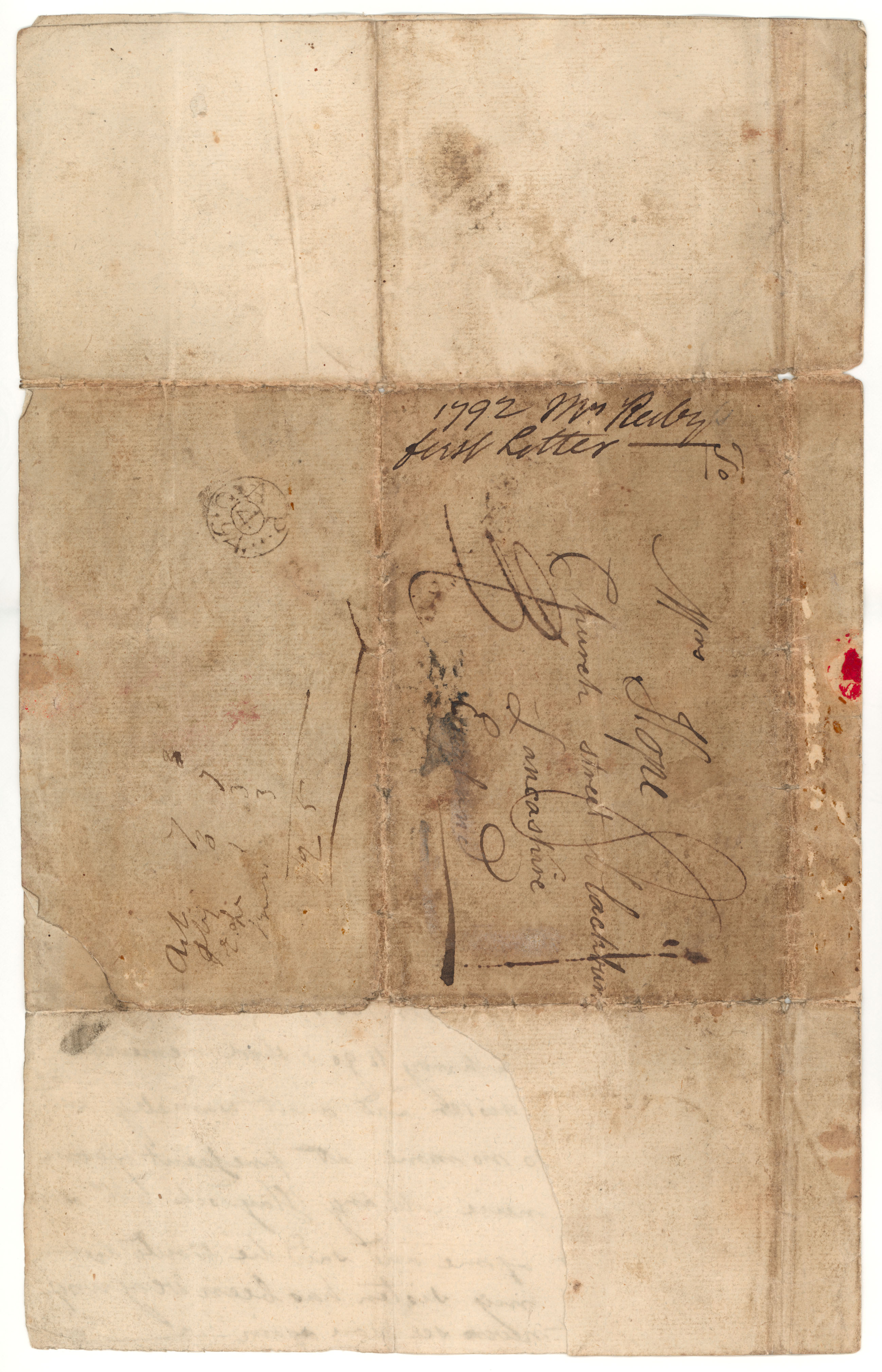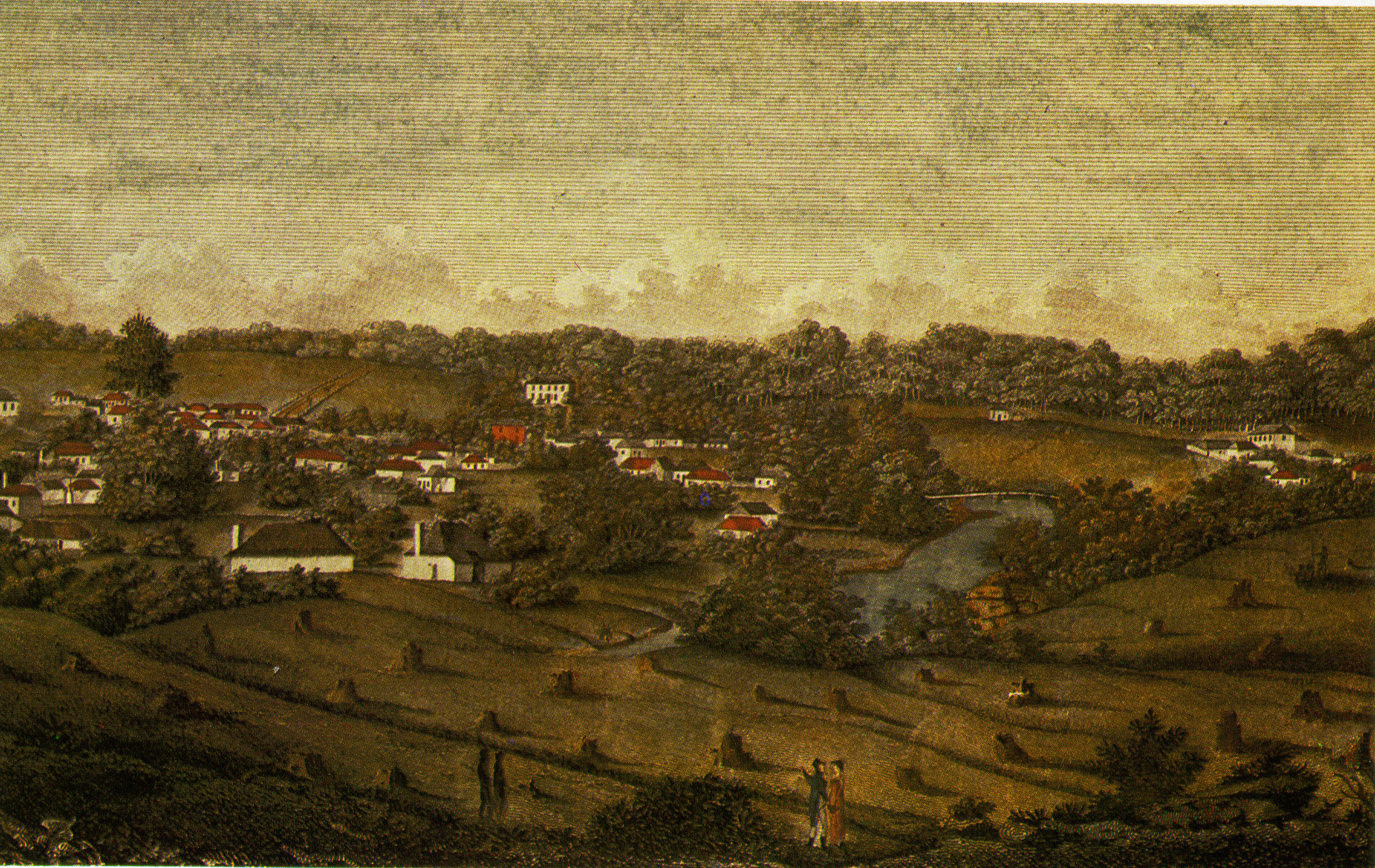|
Sydney Cove West Archaeological Precinct
Sydney Cove West Archaeological Precinct is a heritage-listed precinct that contains The Rocks police station, the Museum of Contemporary Art Australia, car park, parks, shops and roads located at 112-156 George Street, in the inner city Sydney suburb of The Rocks in the City of Sydney local government area of New South Wales, Australia. The precinct previously contained a commissariat store, Maritime Services Board offices, dockyard and Department of Labour & Industry offices. Buildings in the precinct were developed in various stages since 1797 to date, with heritage-listed buildings dating from 1797 to 1939. The precinct is also known as the Museum of Contemporary Art, Maritime Services Board, Colonial Government naval dockyard, Commissariat Stores, Colonial Hospital, Kings and Queens Wharf and First Fleet Park. The property is owned by Property NSW, an agency of the Government of New South Wales. It was added to the New South Wales State Heritage Register on 5 August 2011. ... [...More Info...] [...Related Items...] OR: [Wikipedia] [Google] [Baidu] |
Museum Of Contemporary Art Australia
The Museum of Contemporary Art Australia (MCA), located on George Street in Sydney's The Rocks neighbourhood, is solely dedicated to exhibiting, interpreting, and collecting contemporary art, from across Australia and around the world. It is the only contemporary art museum in Australia with a permanent collection. The museum is housed in the Stripped Classical/Art Deco- styled former Maritime Services Board Building on the western side of Circular Quay. A modern wing was added in 2012. While the museum as an institution was established in 1991, its roots go back a half-century earlier. Expatriate Australian artist JW Power provided for a museum of contemporary art to be established in Sydney in his 1943 will, bequeathing both money and works from his collection to the University of Sydney, his alma mater. The works, along with others acquired with the money, were exhibited mainly as a traveling collection in the decades afterward, stored in two different university buildings ... [...More Info...] [...Related Items...] OR: [Wikipedia] [Google] [Baidu] |
First Fleet
The First Fleet was a fleet of 11 ships that brought the first European and African settlers to Australia. It was made up of two Royal Navy vessels, three store ships and six convict transports. On 13 May 1787 the fleet under the command of Captain Arthur Phillip, with over 1400 people (convicts, marines, sailors, civil officers and free settlers), left from Portsmouth, England and took a journey of over and over 250 days to eventually arrive in Botany Bay, New South Wales, where a penal colony would become the first European settlement in Australia. History Lord Sandwich, together with the President of the Royal Society, Sir Joseph Banks, the eminent scientist who had accompanied Lieutenant James Cook on his 1770 voyage, was advocating establishment of a British colony in Botany Bay, New South Wales. Banks accepted an offer of assistance from the American Loyalist James Matra in July 1783. Under Banks's guidance, he rapidly produced "A Proposal for Establishing a S ... [...More Info...] [...Related Items...] OR: [Wikipedia] [Google] [Baidu] |
Queen Victoria Building
The Queen Victoria Building (abbreviated as the QVB) is a heritage-listed late-nineteenth-century building designed by the architect George McRae located at 429–481 George Street in the Sydney central business district, in the Australian state of New South Wales. The Romanesque Revival building was constructed between 1893 and 1898 and is wide by long. The domes were built by Ritchie Brothers, a steel and metal company that also built trains, trams and farm equipment. The building fills a city block bounded by George, Market, York, and Druitt Streets. Designed as a marketplace, it was used for a variety of other purposes, underwent remodelling, and suffered decay until its restoration and return to its original use in the late twentieth century. The property is owned by the City of Sydney and was added to the New South Wales State Heritage Register on 5 March 2010. History Site and precursors The site has been under the control of the council of the City of Sydney since ... [...More Info...] [...Related Items...] OR: [Wikipedia] [Google] [Baidu] |
Lachlan Macquarie
Major-general (United Kingdom), Major General Lachlan Macquarie, Companion of the Order of the Bath, CB (; gd, Lachann MacGuaire; 31 January 1762 – 1 July 1824) was a British Army officer and colonial administrator from Scotland. Macquarie served as the fifth Governor of New South Wales from 1810 to 1821, and had a leading role in the social, economic, and architectural development of the colony. He is considered by historians to have had a crucial influence on the transition of New South Wales from a penal colony to a free settlement and therefore to have played a major role in the shaping of Australian society in the early nineteenth century. Early life Lachlan Macquarie was born on the island of Ulva off the coast of the Isle of Mull in the Inner Hebrides, a chain of islands off the West Coast of Scotland. His father, Lachlan senior, worked as a carpenter and miller, and was a cousin of a Clan MacQuarrie chieftain. His mother, Margaret, was the sister of the influential Cla ... [...More Info...] [...Related Items...] OR: [Wikipedia] [Google] [Baidu] |
William Bligh
Vice-Admiral William Bligh (9 September 1754 – 7 December 1817) was an officer of the Royal Navy and a colonial administrator. The mutiny on the HMS ''Bounty'' occurred in 1789 when the ship was under his command; after being set adrift in ''Bounty''s launch by the mutineers, Bligh and his loyal men all reached Timor alive, after a journey of . Bligh's logbooks documenting the mutiny were inscribed on the UNESCO Australian Memory of the World register on 26 February 2021. Seventeen years after the ''Bounty'' mutiny, on 13 August 1806, he was appointed Governor of New South Wales in Australia, with orders to clean up the corrupt rum trade of the New South Wales Corps. His actions directed against the trade resulted in the so-called Rum Rebellion, during which Bligh was placed under arrest on 26 January 1808 by the New South Wales Corps and deposed from his command, an act which the British Foreign Office later declared to be illegal. He died in London on 7 December 1817. ... [...More Info...] [...Related Items...] OR: [Wikipedia] [Google] [Baidu] |
Mary Reibey
Mary Reibey née ''Haydock'' (12 May 177730 May 1855) was an English-born merchant, shipowner and trader who was transported to Australia as a convict. After gaining her freedom, she was viewed by her contemporaries as a community role model and became legendary as a successful businesswoman in the colony. Early life Reibey, baptised Molly Haydock, was born on 12 May 1777 in Bury, Lancashire, England. Following the death of her parents, she was reared by a grandmother and sent into service. She ran away, and was arrested for stealing a horse in August 1791. At the time, she was disguised as a boy and was going under the name of James Burrow. Sentenced to seven years' transportation, she arrived in Sydney, Australia, on the ''Royal Admiral'' in October 1792. Life and career in Australia On 7 September 1794, 17-year-old Mary married Thomas Reibey, after he had proposed to her several times; she finally agreed to marry the junior officer on the store ship ''Britannia''. Reibey ... [...More Info...] [...Related Items...] OR: [Wikipedia] [Google] [Baidu] |
Philip Gidley King
Captain Philip Gidley King (23 April 1758 – 3 September 1808) was a British politician who was the third Governor of New South Wales. When the First Fleet arrived in January 1788, King was detailed to colonise Norfolk Island for defence and foraging purposes. As Governor of New South Wales, he helped develop livestock farming, whaling and mining, built many schools and launched the colony's first newspaper. But conflicts with the military wore down his spirit, and they were able to force his resignation. King Street in the Sydney CBD is named in his honour. Early years and establishment of Norfolk Island settlement Philip Gidley King was born at Launceston, England on 23 April 1758, the son of draper Philip King, and grandson of Exeter attorney-at-law John Gidley. He joined the Royal Navy at the age of 12 as captain's servant, and was commissioned as a lieutenant in 1778. King served under Arthur Phillip who chose him as second lieutenant on HMS ''Sirius'' for the exped ... [...More Info...] [...Related Items...] OR: [Wikipedia] [Google] [Baidu] |
Isaac Nichols
Isaac Nichols (29 July 1770 – 18 November 1819) was an English born Australian farmer, shipowner and public servant who was a convict transported to New South Wales on the Third Fleet, on the Admiral Barrington. He was transported for seven years in 1790 for stealing. He is most remembered as the first postmaster of the postal service now known as Australia Post. In New South Wales Isaac was born in Calne, Wiltshire, to Jonathan Nichols and his wife Sarah, in New South Wales he won favour with Governor Hunter and his aide-de-camp George Johnston, and was appointed chief overseer of convict gangs labouring in the Sydney area. In 1797 after his sentence expired, Hunter granted him in the Concord district, on which he established a farm, and was assigned two convicts to farm it in lieu of his salary as chief overseer. The next year he purchased a spirit licence and opened an inn in George St. In 1799 he was convicted of receiving stolen goods and sentenced to 14 years on Norf ... [...More Info...] [...Related Items...] OR: [Wikipedia] [Google] [Baidu] |
John Hunter (Royal Navy Officer)
Vice Admiral John Hunter (29 August 1737 – 13 March 1821) was an officer of the Royal Navy, who succeeded Arthur Phillip as the second Governor of New South Wales, serving from 1795 to 1800.J. J. Auchmuty,Hunter, John (1737–1821), ''Australian Dictionary of Biography'', Volume 1, MUP, 1966, pp 566–572. Retrieved 12 August 2009 Both a sailor and a scholar, he explored the Parramatta River as early as 1788, and was the first to surmise that Tasmania might be an island. As governor, he tried to combat serious abuses by the military in the face of powerful local interests led by John MacArthur. Hunter's name is commemorated in historic locations such as Hunter Valley and Hunter Street, Sydney. Family and early life John Hunter was born in Leith, Scotland, the son of William Hunter, a captain in the merchant service, and Helen, ''née'' Drummond, daughter of J. Drummond and niece of George Drummond, several-time lord provost of Edinburgh. As a boy Hunter was sent to live wit ... [...More Info...] [...Related Items...] OR: [Wikipedia] [Google] [Baidu] |
Parramatta
Parramatta () is a suburb and major Central business district, commercial centre in Greater Western Sydney, located in the state of New South Wales, Australia. It is located approximately west of the Sydney central business district on the banks of the Parramatta River. Parramatta is the administrative seat of the Local government areas of New South Wales, local government area of the City of Parramatta and is often regarded as the main business district of Greater Western Sydney. Parramatta also has a long history as a second administrative centre in the Sydney metropolitan region, playing host to a number of state government departments as well as state and federal courts. It is often colloquially referred to as "Parra". Parramatta, founded as a British settlement in 1788, the same year as Sydney, is the oldest inland European settlement in Australia and is the economic centre of Greater Western Sydney. Since 2000, government agencies such as the New South Wales Police Force ... [...More Info...] [...Related Items...] OR: [Wikipedia] [Google] [Baidu] |
Third Fleet (Australia)
The Third Fleet comprised 11 ships that set sail from the Kingdom of Great Britain in February, March and April 1791, bound for the Sydney penal settlement, with more than 2,000 convicts aboard. The passengers comprised convicts, military personnel and notable people sent to fill high positions in the colony. More important for the fledgling colony was that the ships also carried provisions. The first ship to arrive in Sydney was the ''Mary Ann'' with its cargo of female convicts and provisions on 9 July 1791. ''Mary Ann'' had sailed on her own to Sydney Cove, and there is some argument about whether she was the last ship of the Second Fleet, or the first ship of the Third Fleet, or simply sailing independently, as was HMS ''Gorgon''. The vessels that unambiguously belong to the third fleet all left together. The ships that make up each fleet, however, are decided from the viewpoint of the settlers in Sydney Cove. For them, the second set of ships arrived in 1790 (June), and t ... [...More Info...] [...Related Items...] OR: [Wikipedia] [Google] [Baidu] |
Circular Quay
Circular Quay is a harbour, former working port and now international passenger shipping port, public piazza and tourism precinct, heritage area, and transport node located in Sydney, New South Wales, Australia on the northern edge of the Sydney central business district on Sydney Cove, between Bennelong Point and The Rocks. It is part of the local government area of the City of Sydney. The Circular Quay area is a popular neighbourhood for tourism and consists of walkways, pedestrian malls, parks and restaurants. It hosts a number of ferry quays, bus stops, and a railway station. Often referred to as the "gateway to Sydney", the precinct has views of the Sydney Harbour Bridge and the Sydney Opera House and is a common location for viewing Sydney New Year's Eve fireworks. History Indigenous history The Aboriginal name for Circular Quay is ''Warrung'', meaning "Little Child". The first people to occupy the area now known as Sydney were Aboriginal Australians. Radiocarbon da ... [...More Info...] [...Related Items...] OR: [Wikipedia] [Google] [Baidu] |







_-_geograph.org.uk_-_950933.jpg)

